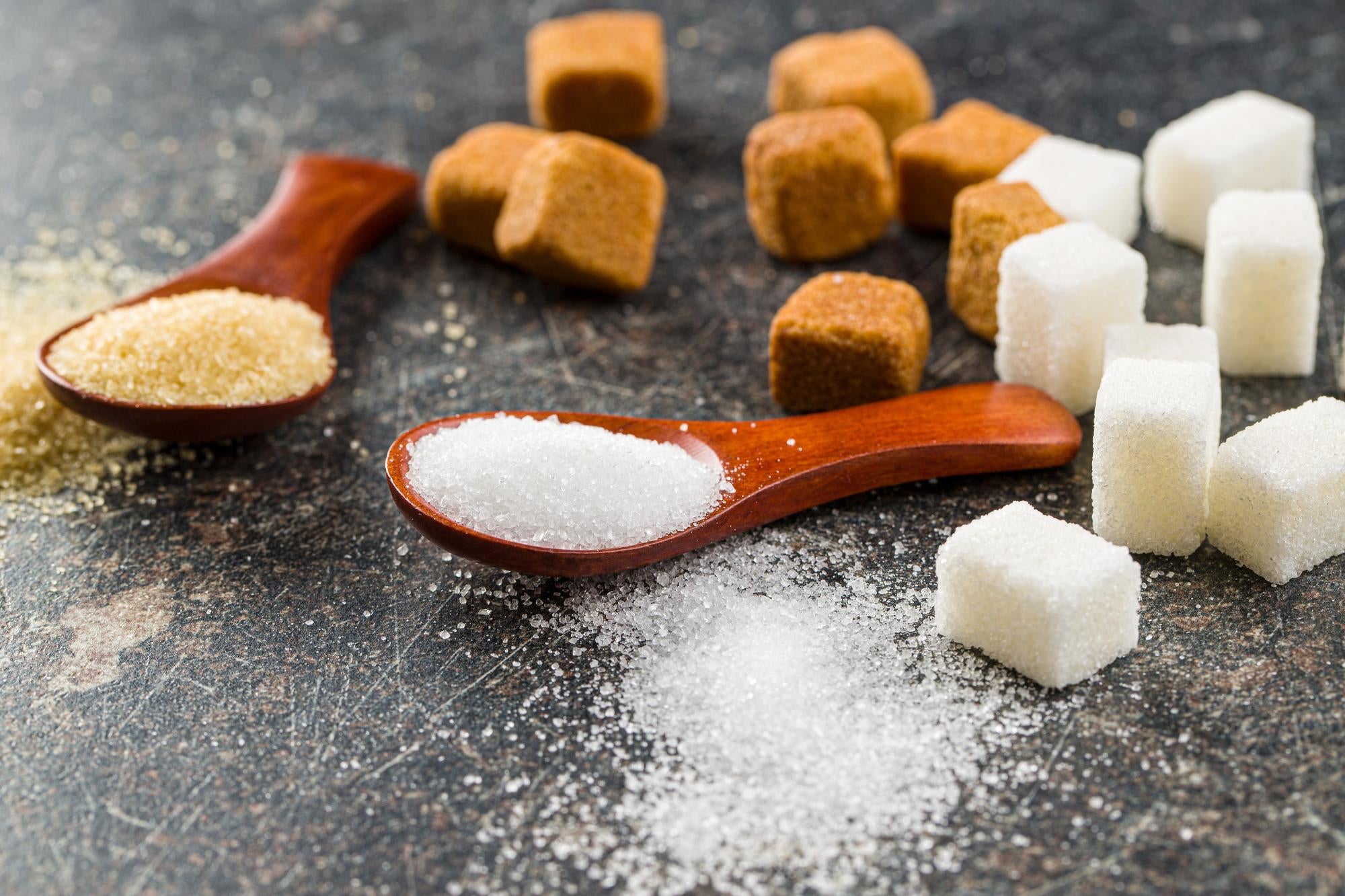Introducing the Truth Behind Sugar Beet Vs Sugar Cane: Advantages, Utilizes, and Handling Techniques Discussed
The difference between sugar beet and sugar cane is usually neglected in conversations regarding sugar manufacturing. Each crop offers distinct advantages and applications in various markets. Their cultivation techniques and processing methods also vary significantly. Understanding these subtleties is important for stakeholders in the sugar sector. What effects do these distinctions have for health and wellness, flavor, and ecological impact? Exploring these elements can disclose much deeper understandings right into the worldwide sugar market.

Overview of Sugar Beet and Sugar Cane
Sugar beet and sugar cane are two key sources of sugar, each with distinct attributes and cultivation methods. Sugar beet, a root vegetable, grows in temperate environments and is commonly collected in the loss. Its high sugar content, ranging from 15% to 20%, makes it a beneficial crop for sugar manufacturing. The process involves extracting juice from the beetroots, which is then improved right into granulated sugar.
On the other hand, sugar cane is a tropical lawn that thrives in warm, moist settings. It can achieve a sugar content of as much as 14%, but its high, fibrous stalks need substantial handling. The cane is crushed to draw out juice, which undergoes boiling and condensation to create sugar. Both sources contribute significantly to the worldwide sugar supply, with sugar beet mostly grown in Europe and The United States And Canada, while sugar cane is mainly grown in Brazil, India, and other exotic areas.
Growing Practices: Sugar Beet vs. Sugar Cane
Growing practices for sugar beet and sugar cane differ substantially because of their unique growing problems. Sugar beets thrive in cooler environments with well-drained dirt, while sugar cane prefers warmer temperatures and abundant dampness. Furthermore, the harvesting techniques used for every crop reflect these ecological requirements and influence total yield and quality.
Expanding Problems Comparison
While both sugar beet and sugar cane thrive in details ecological conditions, their farming practices vary markedly. Sugar beet is largely grown in temperate regions, favoring cooler environments with well-drained soil and modest rainfall. It requires a growing period of regarding 90 to 120 days, with perfect temperature levels between 15 ° C to 25 ° C. In comparison, sugar cane flourishes in exotic and subtropical climates, growing in warm temperatures ranging from 20 ° C to 32 ° C. It calls for plentiful sunshine and consistent rainfall, typically needing watering in drier areas. Sugar cane has a longer growing cycle, typically lasting 12 to 24 months. These differences in growing problems significantly affect the geographical circulation and agricultural techniques connected with each crop.
Gathering Strategies Differences
The harvesting techniques for sugar beet and sugar cane mirror their distinct growth features and agricultural methods. Sugar beet is commonly gathered mechanically, with farmers made to uproot the entire plant, making certain minimal dirt disturbance. The beets are then transferred for processing quickly after harvest to keep top quality. In comparison, sugar cane harvesting often involves a mix of handbook and mechanical methods. Employees might initially reduce the cane by hand, specifically in areas where automation is less possible. Ultimately, specialized machinery is used to collect and transport the cut stalks to refining facilities. These varying methods not just influence performance however additionally influence the quality and return of the last sugar items, showcasing the flexibility of each crop to its atmosphere.
Nutritional Contrast and Health And Wellness Conveniences
When contrasting the nutritional profiles of sugar beet and sugar cane, it ends up being clear that each deals unique wellness advantages. Sugar beetroots are abundant in crucial nutrients like folate, manganese, and potassium, which add to overall health and wellness. They likewise include fiber, which aids digestion and might help regulate blood sugar degrees. In addition, sugar beetroots are understood for their antioxidant residential properties, which can battle oxidative stress and anxiety.
Conversely, sugar cane is largely made up of sucrose, offering quick power. While it does not have the exact same level of minerals and vitamins located in sugar beetroots, sugar cane does include small quantities of B nutrients such as calcium and magnesium. Sugar cane juice is usually proclaimed for its hydrating properties and prospective health advantages, including enhanced gastrointestinal wellness. Eventually, the selection in between sugar beet and sugar cane might depend upon individual health and wellness goals and dietary choices.
Flavor Accounts and Culinary Makes Use Of
Flavor profiles of sugar beet and sugar cane vary considerably, affecting their cooking applications (Sugar beet vs sugar cane). Sugar cane, with its normally sweet and complex flavor, is usually favored in beverages, desserts, and different cooking recipes. It offers an abundant, caramel-like note that enhances the taste of products such as syrups, molasses, and rum. On the other hand, sugar beet has a more neutral and less aromatic preference, making it ideal for applications where sweetness is preferred without modifying the meal's integral tastes. It is often made use of in processed foods, baked items, and sweeteners
Cooking professionals often choose sugar cane for its depth and richness, especially in premium food preparation and craft drinks. On the other hand, sugar beet's adaptability as a sugar in my response mass-produced items provides to a more comprehensive market. Eventually, the choice in between these 2 sugars can substantially influence taste accounts and total cooking experiences.
Ecological Impact of Sugar Production
Sugar production, whether from sugar beet or sugar cane, carries considerable ecological ramifications. Sugar cane growing typically brings about logging, specifically in tropical areas, interfering with local environments and adding to biodiversity loss. The substantial use of fertilizers and chemicals in both sugar beet and sugar cane farming can result in soil degradation and water pollution, influencing surrounding habitats and neighborhoods. Furthermore, the high water intake required for sugar cane irrigation postures a risk to neighborhood water materials, particularly in arid regions.
On the other hand, sugar beet farming normally takes place in view website temperate environments, which may reduce some deforestation worries. It is not without its own difficulties, including dirt erosion and reliance on chemical inputs. On the whole, the environmental influence of sugar manufacturing is complex, requiring sustainable farming techniques and awareness of resource monitoring to lessen damages to environments and promote environmental wellness.
Processing Strategies: From Plant to Sugar
Countless processing methods are utilized to change sugar beet and sugar cane into granulated sugar, each technique reflecting the unique attributes of the resource plant. For sugar beets, the process starts with cleaning and cutting the roots right into thin strips, which are then based on diffusion-- a strategy where hot water essences sugar from the beet slices. The resulting liquid is purified, focused, and taken shape.
In comparison, sugar cane handling involves squashing the stalks to remove juice, followed by clarification to eliminate impurities. The juice is after that evaporated, resulting in syrup that undertakes formation. Both processes are complied with by separation of the sugar crystals from the molasses, which is a result. The lasts include drying and packaging the granulated sugar for distribution. These methods highlight the distinctive paths with which these 2 plants generate sugar, each with its own collection of difficulties and performances.
Economic Elements of Sugar Beet and Sugar Cane Industries
The economic landscape of the sugar beet and sugar cane markets exposes notable differences in manufacturing costs, market dynamics, and local influences. Sugar beet, primarily grown in pleasant climates, commonly sustains higher production costs because of labor and input expenditures. Alternatively, sugar cane thrives in exotic areas, typically benefiting from lower labor costs and favorable weather problems, which can lead to greater yields.
Market dynamics likewise differ, as sugar cane dominates worldwide production, making up roughly 80% of sugar result. This frequency affects rates frameworks and trade circulations. In comparison, sugar beet is extra regionally concentrated, specifically in Europe and The continue reading this United States and Canada, affecting neighborhood economic situations reliant on beet manufacturing.
Additionally, fluctuations in worldwide sugar prices can considerably impact both sectors, affecting farmer revenue and investment levels. Comprehending these economic elements is important for stakeholders aiming to browse the intricacies of the sugar market properly.

Regularly Asked Concerns

Can Sugar Beet and Sugar Cane Be Intercropped Efficiently?
Intercropping sugar beet and sugar cane provides obstacles as a result of varying development needs and environmental demands. Nonetheless, with mindful administration and appropriate conditions, it might produce benefits such as boosted soil health and wellness and resource efficiency.
What Are the Historic Beginnings of Sugar Beet and Sugar Cane?
The historical origins of sugar beet trace back to 18th century Europe, while sugar cane has origins in Southeast Asia, grown for thousands of years. Both plants have actually considerably influenced international sugar manufacturing and agriculture.
How Do Sugar Beet and Sugar Cane Affect Soil Health And Wellness?
The results of sugar beet and sugar cane on soil health and wellness differ. Sugar beet can improve dirt framework and nutrient content, while sugar cane might diminish nutrients if not managed effectively, impacting long-term soil fertility.
Exist Any Emerging Technologies in Sugar Manufacturing?
Arising innovations in sugar production consist of accuracy farming, progressed genetic engineering for greater yields, and innovative extraction approaches. These advancements intend to enhance effectiveness, minimize ecological influence, and boost the total sustainability of sugar manufacturing procedures.
What Are the Trick Distinctions in Labor Requirements for Both Crops?
The vital distinctions in labor needs for sugar beet and sugar cane hinge on growing, harvesting, and handling. Sugar beet vs sugar cane. Sugar beet usually requires more automation, while sugar cane usually calls for a lot more hands-on labor for collecting and processing phases